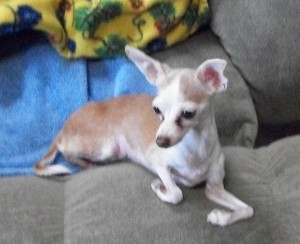
Diligence. And patience, you need that, too. A good sense of humor wouldn’t hurt, either. There’s a lot of responsibility wrapped up in pet ownership, and one of those responsibilities is taking the time to potty train your new puppy. Older dogs who have missed the boat to the potty training conference can be rehabilitated as well, but of course, expect a rougher road to recovery. The key in both cases is diligence.
You’re going to need eyes in the back of your head. Keep your young trainees close and don’t let them out of your sight. You need to be able to see when they need to do their business. When you see them sniffing around or turning in circles, that’s the time to act. Young dogs usually need to go pee or potty after eating, drinking, or playing, so be alert. When you do see them in the act, it’s time to get them outside. Clap your hands to get their attention and then lead (or carry if need be) them outside where they can eliminate safely. You should try to be consistent about the route you take each time they want to go. This will help train them and let them know how and where they should go when they need to potty. And remember to praise profusely when they get it right!
Some accessories to make potty training easier might be a nice long leash to attach to your puppy so that you know where he/she is even while indoors. Some people swear by “crate training” young dogs and if you want to go this route, you’ll need a crate large enough for your pup to stand up and turn around in, as well as some space for toys and food. You might also consider a potty training pad. These pads contain scents that dogs will recognize as safe areas for potty time. Put one in front of the door you want your dog to use to go outside when nature calls – and then be sure to keep your eye on it. Remember: diligence!
